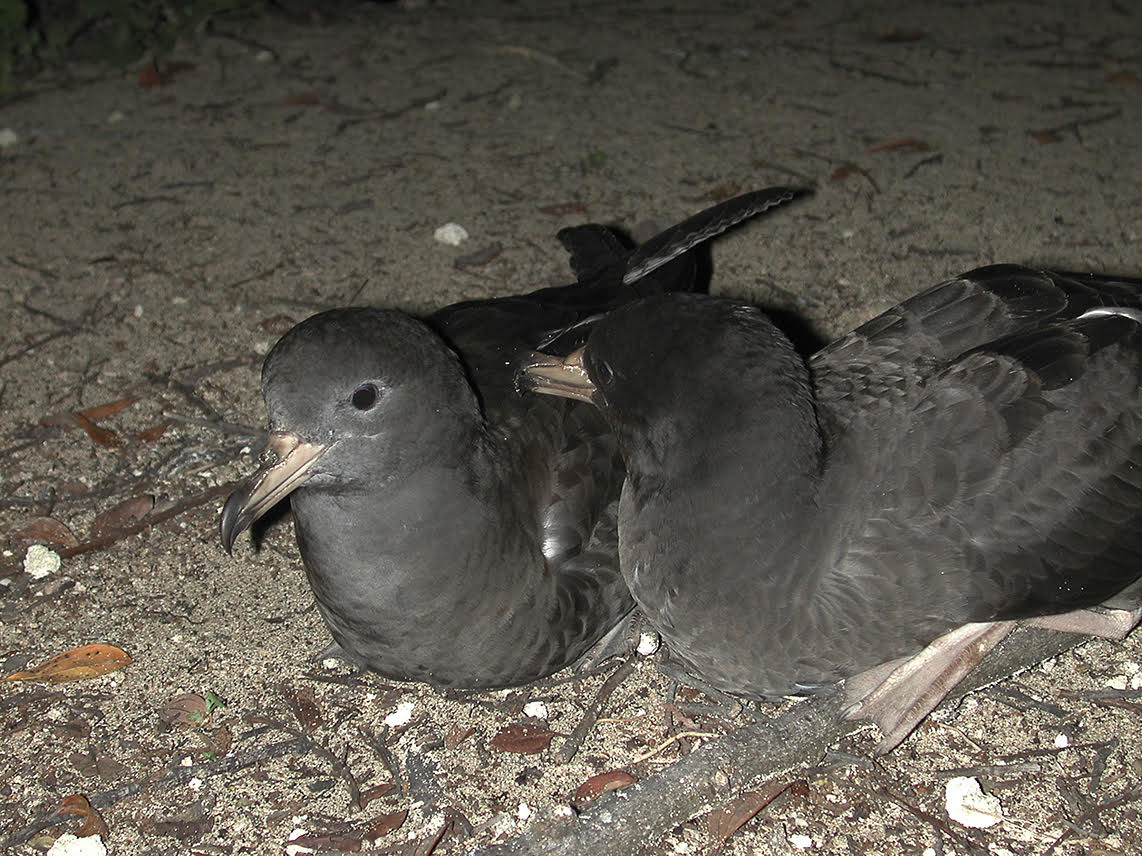 Flesh-footed Shearwaters; photograph by Ian Hutton
Flesh-footed Shearwaters; photograph by Ian Hutton
Bianca Keys (Institute for Marine and Antarctic Studies, Tasmania, Australia) and colleagues have published in Environmental Science & Technology on a new detection method for nano- and ultrafine plastics using Flesh-footed and Short-tailed shearwaters as case studies.
The paper’s abstract follows:
“Plastic ingestion has been documented in a plethora of taxa. However, there is a significant gap in the detection of nano- and ultrafine particles due to size limitations of commonly used techniques. Using two Australian seabird species as case studies, the flesh-footed shearwater (FFSH) Ardenna carneipes and short-tailed shearwater (STSH) A. tenuirostris, we tested a novel approach of flow cytometry to quantify ingested particles <70 μm in the fecal precursor (guano; colon and cloacal contents) of both species. This method provided the first baseline data set for these species for plastics in the 200 nm–70 μm particle size ranges and detected a mean of 553.50 ± 91.21 and 350.70 ± 52.08 plastics (count/mg fecal precursor, wet mass) in STSH and FFSH, respectively, whereas Fourier transform infrared spectroscopy (FT-IR) provided accurate measurements of polymer compositions and quantities in the size range above 5.5 × 5.5 μm2. The abundance of nano- and ultrafine particles in the guano (count/mg) was not significantly different between species (p-value = 0.051), suggesting that foraging distribution or prey items, but not species, may contribute to the consumption of small plastics. In addition, there was no correlation between macroplastics in the stomach compared to the fecal precursor, indicating that small particles are likely bioaccumulating (e.g., through shedding and digestive fragmentation) and/or being directly ingested. Combining flow cytometry with FT-IR provides a powerful quantitative and qualitative analysis tool for detecting particles orders of magnitude smaller than that are currently explored with wider applications across taxa and marine environments.”
Reference:
Keys, B.C., Grant, M.L., Rodemann, R., Mylius, K.A., Pinfold, T.L., Rivers-Auty, J. & Lavers, J.L. 2022. New Methods for the Quantification of Ingested Nano- and Ultrafine Plastics in Seabirds. Environmental Science & Technology. DOI: 10.1021/acs.est.2c06973.
9 January 2023

 English
English  Français
Français  Español
Español